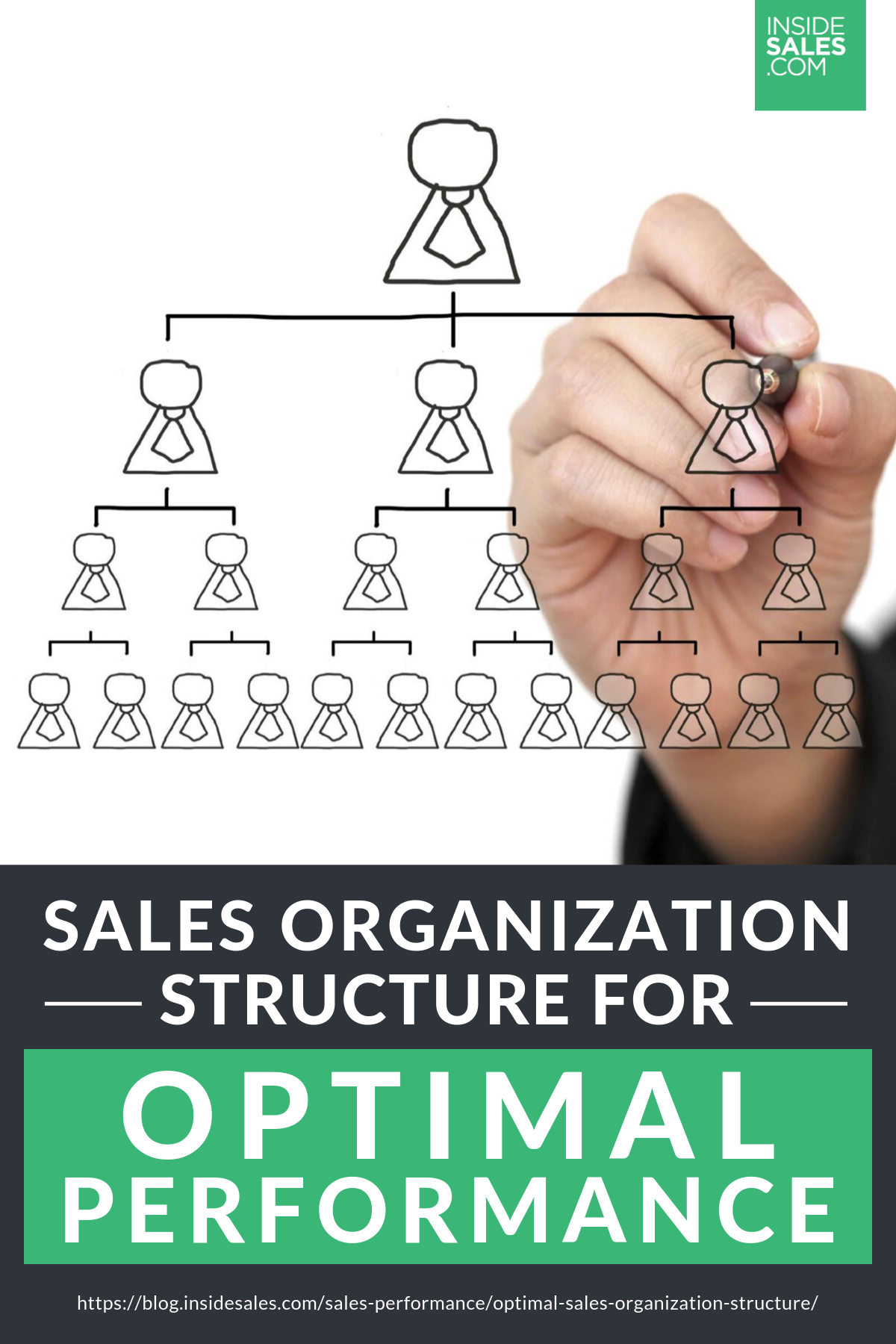Sales Organization Structure For Optimal Performance
Xant Team
To achieve the optimal performance of your sales team, read this article to find out what the best sales organization structure is.
RELATED: Want To Increase Sales Rep Performance By 31%? Build Your Team From The Bottom Up
In this article:
- Optimal Sales Organization Structures – Skating Where the Puck Should Be
- The Seven Types of Organizational Design
- Complex Sales Structures Lead to Low Productivity
- The Two Rules of Changing Sales Structure
- Managing Sales Structure Changes in the Organization
How the Right Sales Team Structure Can Help Achieve Optimal Performance
Sales leaders agree that the ideal organization is split evenly among inside sales and outside sales professionals. This finding is according to XANT recent research.
However, there is even more research out there on optimal sales organization structures. Certain types of organizational structures lead to better business outcomes, while others can harm productivity.
Organizational Structure Definition: An organizational structure dictates how tasks and other corporate activities are assigned and delegated. It also serves as a prescription of responsibility on organization members as well as information flow.
Dan Parry, principal at the Sales Benchmark Index (SBI), told us more about this on the Playmakers podcast hosted by Gabe Larsen. He spoke about what makes a winning sales organization structure and how to make changes without losing your most valuable customers.
SBI is a management consulting firm specializing in sales and marketing focused exclusively on helping B2B companies make their number.
Optimal Sales Organization Structures – Skating Where the Puck Should Be
Sales organization structures are lacking in most companies, says Dan Parry, who has ample experience working on department designs.
“Legacy organization designs are based upon what has happened in the past, as opposed to what’s going to happen in the future. They’re not playing a Wayne Gretzky (professional ice hockey player – Ed.),” Dan says.
“They’re not going where the puck should be, they are just going where the puck is,” said Dan, on the podcast.
Another common mistake when it comes to org structure is the lack of balance in control.
Organizations may try to control their salespeople too much, and this may reflect on the org’s structure. As a result, salespeople won’t have the freedom to focus more on sales and customer relationships.
Having the right type of organizational design can help address how to better balance control in the organization.
The Seven Types of Organizational Design

Sales Benchmark Index shows there are seven organizational design models, and most companies will exhibit a combination of these models – a hybrid model.
- The triangle: This is a popular structural design for a lot of different organizations. Basically, it is composed of an enterprise account, mid-market accounts, and S & B sales account.
- The hunter/farmer model: In this model, a hunter goes out and finds a deal, then passes it to a farmer. Afterward, the farmer takes the opportunity and nurtures it, delivers the work, and then potentially cross-sales.
- A geographical design is just as its name says. Overall, this type of organizational design model is based on territories around the country.
- The industry vertical model is centered around verticals: pharmaceuticals, manufacturing, technology, or health care, depending on the type of product offered.
- There is also a product model. Generally, the company will be organized based on the products it sells.
- The persona model: This model is based on social proximity. In particular, it is how well the sales professional knows the prospect.
- Hybrid models: This is the seventh approach, and the most common. This model is a mix of all of the above models. The popularity of hybrid models helps an organization avoid dealing with the common shortcomings of one single model. Otherwise, they may subject themselves to more suboptimal performance for their team.
Overall, a decent study on your organization’s operations can help you decide which models work best.
RELATED: Building A Global Sales Operations Team W/ Gideon Fourie @FirstData
Complex Sales Structures Lead to Low Productivity
However, having more than two organizational models will hinder productivity, shows Dan Parry. In fact, if a company uses multiple models to structure its sales organization, it doesn’t mean it’s going to do better.
Under those circumstances, the chances are higher that the complexity of the models will disrupt sales activity.
“What happens when you start to get more complex or their number of sales org design models, your productivity starts to go down. It’s because you’re disrupting the salesperson,” Dan Parry points out.
“It’s too complex for that salesperson to handle. And the customer will be confused as well.”
“They will have multiple people calling them,” said Dan Parry.
With over 11,000 companies participants as studied by the SBI, companies with only two structural models for sales get a quota of about 60%. With three or more models, you will go down below 40% on quota attainment.
“If you have a geography and a hunter/farmer structure, that’s optimal. Or you might have a stratification based upon industry.”
“That’s optimal, with a general salesperson. But when he starts to get three or more organizational structures, we either see a productivity dip, or the quota attainment goes down,” shows Dan Parry.
The Two Rules of Changing Sales Structure
Changing the sales organizational design is a high-risk change in companies, adds Dan. Adoption is always slow, especially in large enterprises.
The reason why changing the sales structure in enterprises is slow is because changing things sometimes results in lost customers. Additionally, it can also lead to a loss in revenue.
“We have two rules. When you have an organization design a structure, you never ever lose a customer.”
“Second rule, never ever lose an “A” player,” concludes Dan Parry.
Managing Sales Structure Changes in the Organization
Creating organizational structure changes involves a lot of risks. Thus, managing sales structure changes is key to a seamless transition for your organization.
There are some things you can do to better manage structural changes for your organization. Here are some of them:
- Communicate with your stakeholders so they’re aware of the changes you’re making. In this way, you can receive feedback from them as well.
- Take an inventory of your sales structure and find out which skills training you’ll need to achieve your new goals.
- Identify the core foundation of your sales structure changes. Furthermore, ensure that the core foundation is not based on hierarchical relationships in the organization.
This topic on org structures and more are available on the Playmaker Podcast. Listen to the Playmaker podcast to learn:
- How customers buy and why what they care about matters to your sales structure
- Why inside sales are becoming virtual sales – and why your face-to-face meetings are more important than ever
- How you can make sales and marketing play nice together by changing your department structures
When it comes to creating an exceptional sales team, the training nor the skills of your sales team is not the only indicator. In fact, as this article covers, the organizational structure has a significant effect on the efficiency of a sales team.
If you want to find the optimal performance for your salespeople, then looking into org structure changes might be the key.
Although it might take a bit of trial and error on your part, a delicate intervention can give a massive boost to the overall performance of your sales team.
What type of sales organizational structure worked best with your sales team? Leave a comment down below to let us know!
UP NEXT:
- How To Pay Your Sales Development Sales
- Five Tips To Build A World-Class Sales Development Team
- XANT Unveils New AI Account Management Solution

Editor’s Note: This post was originally published on September 29, 2017, and has been updated for quality and relevancy.